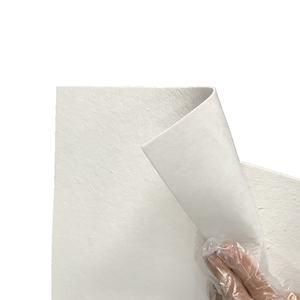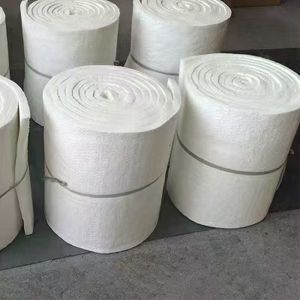Discover Premium Ceramic Products | Durability & Elegance United | Advanced Ceramics
1. Introduction
Just 24 hours ago, a major materials science conference in Germany highlighted breakthroughs in high-temperature ceramics, with silicon carbide crucibles taking center stage for their unmatched thermal stability in next-gen semiconductor and metal refining processes. This renewed spotlight underscores why industries—and even gourmet kitchens—are turning to silicon carbide for performance and durability.

Silicon carbide crucibles are specialized containers made from one of the hardest and most thermally conductive ceramics known to modern engineering. But their use isn’t limited to foundries and labs—silicon carbide has quietly entered the culinary world through premium ceramic bakeware and dinnerware. In this article, we’ll unpack everything you need to know about silicon carbide crucibles and their broader ecosystem of applications.
2. What Is a Silicon Carbide Crucible?
A silicon carbide crucible is a high-performance vessel designed to withstand extreme temperatures—often exceeding 1,600°C (2,912°F)—without deforming or reacting chemically with molten metals or other aggressive materials. Made from sintered silicon carbide (SiC), these crucibles offer exceptional thermal shock resistance, mechanical strength, and corrosion resistance.
Unlike traditional clay or graphite crucibles, silicon carbide versions maintain structural integrity under rapid heating and cooling cycles, making them ideal for aluminum, copper, and precious metal casting, as well as laboratory sample preparation.
3. Industrial Applications Beyond the Crucible
While the silicon carbide crucible remains a cornerstone in metallurgy, the versatility of silicon carbide extends far beyond. Manufacturers leverage this ceramic in a wide range of high-stress components:

- Silicon carbide ceramic tiles and rbsic silicon carbide tile blocks for kiln linings
- Silicon carbide ceramic columns and rings used in filtration and support structures
- Silicon carbide burner nozzles that endure direct flame exposure
- Silicon carbide bricks for furnace construction
- Silicon carbide tubes—including thermocouple protection tubes, porous ceramic tubes, and mullite-reinforced variants—for high-temperature gas and liquid handling
- Silicon carbide discs and grinding discs, including diamond-coated versions for precision pottery and porcelain finishing
- Silicon carbide ceramic piping and plumbing components valued for chemical inertness
These applications all benefit from silicon carbide’s unique blend of hardness, thermal conductivity, and oxidation resistance.
4. Silicon Carbide vs. Alternatives: Boron Carbide and Silicon Nitride
When selecting high-performance ceramics, engineers often compare silicon carbide with boron carbide and silicon nitride. Boron carbide vs silicon carbide comes down to cost and application: boron carbide is harder and better for ballistic armor, but silicon carbide offers superior thermal conductivity and is more economical for crucibles and industrial linings.
Meanwhile, silicon nitride—a different but equally advanced ceramic—excels in toughness and fracture resistance. While a silicon nitride crucible factory might produce components for aerospace bearings or cutting tools, silicon nitride is less common in crucibles due to higher costs and lower thermal conductivity than SiC. However, custom silicon nitride heat shields, silicon nitride plates, and silicon nitride rings are gaining traction in extreme environments where impact resistance is critical.

The high purity silicon nitride powder market continues to grow, but for most high-temperature containment needs, silicon carbide remains the go-to choice.
5. The Unexpected Rise of Silicon Carbide in Kitchenware
Surprisingly, silicon carbide has found a niche in premium ceramic dinnerware and bakeware. Brands now offer:
- Silicon carbide ceramic baking dishes and casserole dishes (with and without lids)
- Silicon carbide ceramic dinner plates, including white, black, and handcrafted varieties
- Silicon carbide ceramic serving bowls, salad bowls, pasta bowls, and ramekins
- Silicon carbide ceramic butter dishes with lids and sugar dishes
- Seasonal items like silicon carbide Christmas plates and platters
- Silicon carbide ceramic oven dishes and baking trays rated for direct flame or broiler use
These items—sometimes marketed as ‘silicon carbide baking ceramic dish’ or ‘silicon carbide ceramic pie dish’—leverage the material’s even heat distribution and durability. While not pure silicon carbide (most are composites with clay or porcelain), they incorporate SiC particles to enhance thermal performance, mimicking professional-grade cookware like Staub’s offerings.
6. Technical Components: Discs, Taps, and Tubes
Beyond crucibles and dinnerware, silicon carbide appears in precision mechanical parts. Silicon carbide ceramic disc taps and quarter-turn taps use wear-resistant ceramic discs for leak-free operation. Similarly, silicon carbide ceramic grinding discs and sanding discs are staples in pottery studios.
In industrial settings, silicon carbide tubes serve as furnace components, insulators, and protective sheaths. Variants like silicon carbide zirconia tubes combine materials for enhanced performance, while silicon carbide thermocouple protection tubes ensure accurate temperature readings in harsh environments.
7. Conclusion
From molten metal handling to gourmet baking, the silicon carbide crucible exemplifies how advanced ceramics bridge industrial and domestic worlds. Its unmatched thermal properties, coupled with growing innovation in silicon carbide ceramic plates, pipes, and discs, ensure its relevance across sectors. Whether you’re casting bronze or roasting a casserole, silicon carbide delivers performance you can trust.
Our Website founded on October 17, 2012, is a high-tech enterprise committed to the research and development, production, processing, sales and technical services of ceramic relative materials such as 7. Our products includes but not limited to Boron Carbide Ceramic Products, Boron Nitride Ceramic Products, Silicon Carbide Ceramic Products, Silicon Nitride Ceramic Products, Zirconium Dioxide Ceramic Products, etc. If you are interested, please feel free to contact us.
